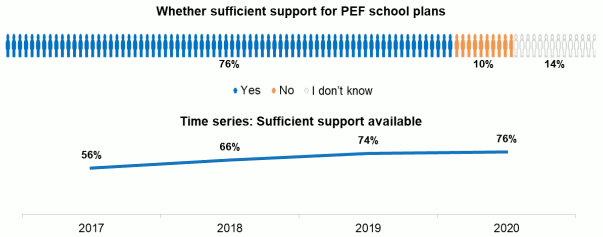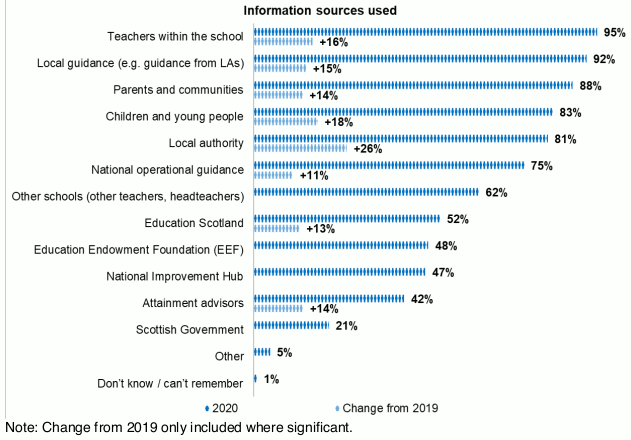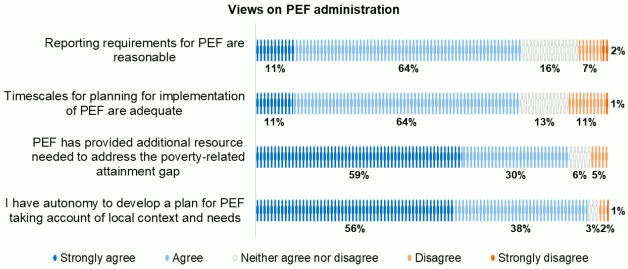Attainment Scotland Fund Evaluation - Headteacher Survey: 2020 report
The Attainment Scotland Fund Evaluation: Headteacher Survey – Full Report 2020 presents key findings from the fifth survey of headteachers of schools in receipt of Attainment Scotland Fund (ASF) support, covering the 2019/20 academic year including the period of school building closures from March.
7. Pupil Equity Funding
7.1. This section summarises schools’ experience around application for and receipt of PEF. This includes views on information and support available to support development of school plans for PEF, on the implementation of PEF within schools, and on the processes around the allocation of PEF.
Developing schools’ approach
7.2. More than 3 in 4 (76%) headteachers felt there was sufficient support in place to develop and implement their school plan for PEF. This was similar to the 2019 survey and represents a 20-point increase on the 2017 survey. Views were broadly similar across key respondent groups.

7.3. Most respondents indicated that they had used multiple information sources in developing plans for PEF. The most commonly used were teachers within the school (used by 95%), local guidance published by local authorities (92%), parents and communities (88%), children and young people (83%) and local authorities (81%).
7.4. This profile shows some change since the 2019 survey. Most notably there has been an increase in the proportion of schools engaging with local authorities, children and young people, teachers within the school, local guidance, parents and communities, Attainment Advisors, Education Scotland, and national guidance.
7.5. Survey results also show some variation across key respondent groups, primarily linked to the level of PEF allocation:
- Those with higher PEF allocations were most likely to consult with other schools, with the National Improvement Hub, with children and young people, and with parents and communities.
- Secondary schools and those with higher PEF allocations were most likely to consult the Scottish Government, and with the Education Endowment Foundation resources.

Note: Change from 2019 only included where significant.
Views on PEF processes
7.6. Headteachers were generally positive in relation to processes around the allocation of PEF. Most (75%) felt that reporting requirements associated with PEF were reasonable, and a similar proportion felt that timescales for planning for PEF have been sufficient (75%). These findings each represent a 12-point improvement from the 2019 survey.
7.7. Views were also highly positive on whether PEF had provided additional resource needed to address the poverty-related attainment gap; 89% felt this has been the case. This is similar to the 2019 survey, and views were broadly consistent across key respondent groups.
7.8. The great majority of headteachers also felt they had autonomy to develop plans that are responsive to their local context and needs (94%). This view was consistent across key respondent groups and is similar to that reported in 2019.

Contact
Email: Fiona.Wager@gov.scot
There is a problem
Thanks for your feedback